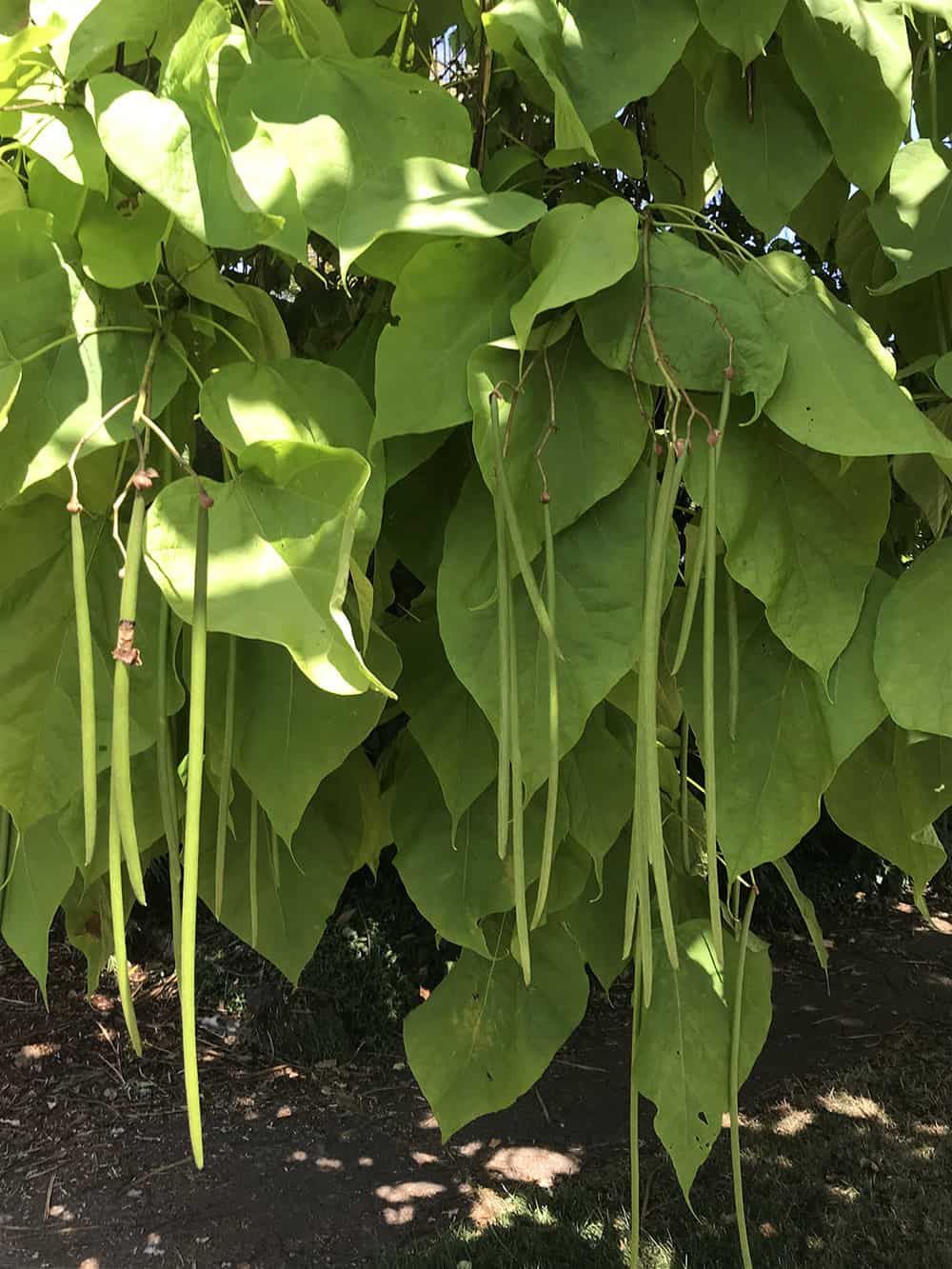| Weight | N/A |
|---|---|
| Dimensions | N/A |
| Botanical Name | Catalpa speciosa |
| Zone | 4-8 |
| Soil | Tolerates many soil types, seasonal flooding and drought. |
| Light | Full sun |
| Pollination | Self-fertile |
| Form | Draping arching deciduous tree, requires pruning to develop a straight single trunk leader. Prune when dormant in 2nd or 3rd year to shape. Prune lower branches (suckers) to retain tree form and reduce low hanging branches. |
| Height | 40-70 feet |
| Spread | 20-40 feet |
| Spacing | 20-30 feet |
| Bloom | Blooms are white with purple and yellow at their centers. Billows of flowers in loose fragrant clusters appear in early July. Individual flowers are similar to foxglove and orchid, flowers appear in early July. |
| Pollinator Friendly | Yes. Important feeding tree for insect and butterfly world with mid summer blooming. |
| Special Notes | Kuthalapa is the native name for this tree and means Head with wings |
Catalpa
$10.00
Northern Catalpa. These beautiful and graceful trees are tough and resilient, as well as very adaptable. Natives of the North American floodplains, they handle adverse conditions including dramatic temperature changes, drought and temporary flooding.
They are a very pretty tree for any landscape, with large heart shaped leaves of bright yellow-green which make a rich backdrop to their tall upright clusters of trumpet shaped white flowers with purple and yellow markings inside. They are late bloomers with flowers appearing in midsummer. Long lasting blooms are an important food source for pollinators.
Also known as the Indian bean tree, or cigar tree for their 8 to 20 inch long hanging seed pods in the fall, these northern catalpas grow to 40 to 70 feet tall. They are not affected by walnut toxicity, transplant well and are moderate growers. These trees benefit from shaping when young. They rarely develop a single strong leader on their own. Shorten side branches as the tree grows and remove lower branches when branching begins at the desired height.
They are not tolerant of salt spray or salt in soil, so not a good candidate for coastal plantings.




Reviews
There are no reviews yet.